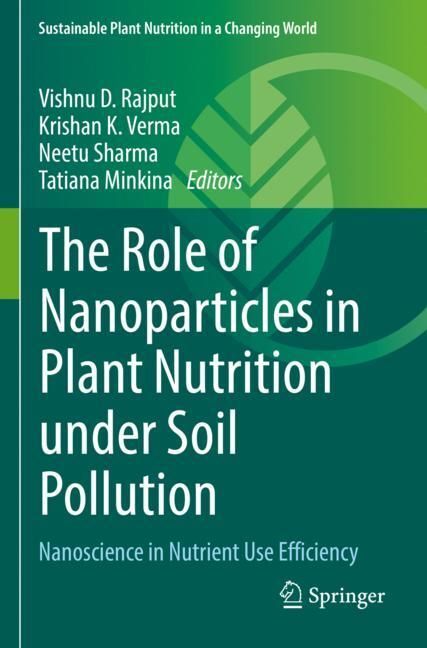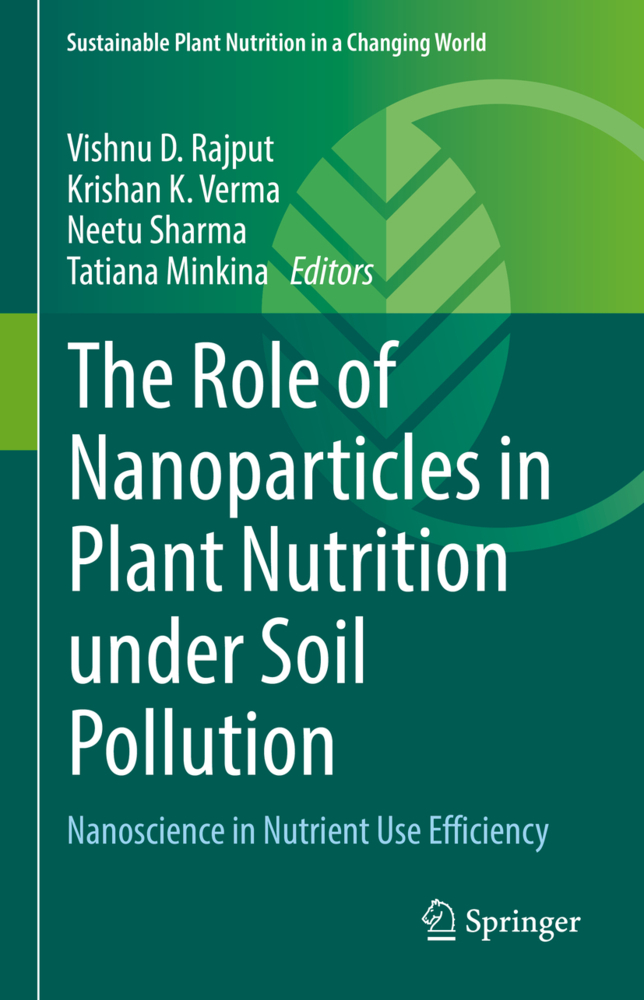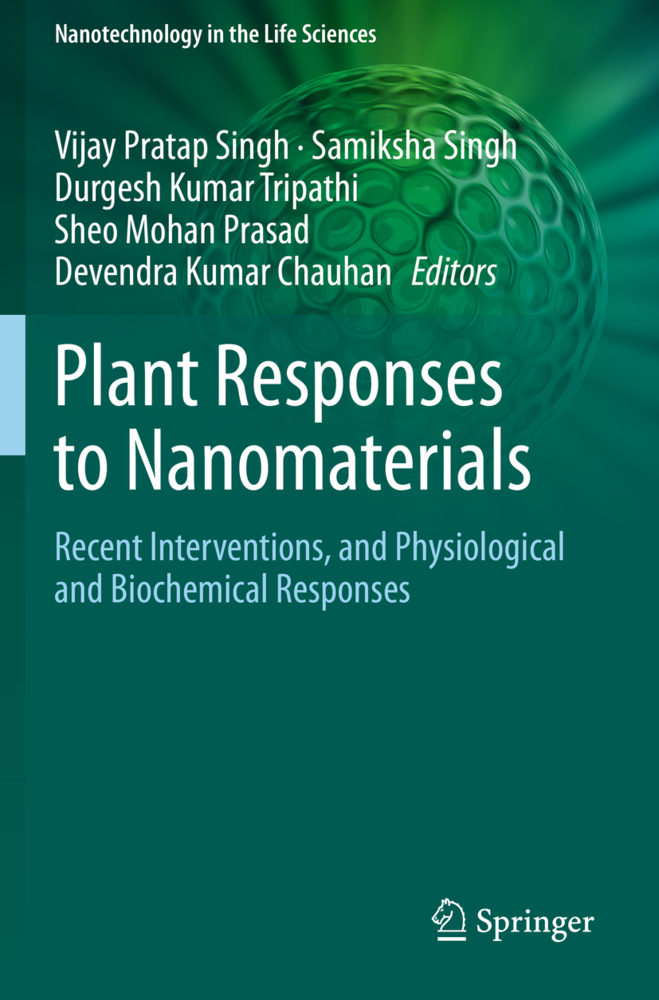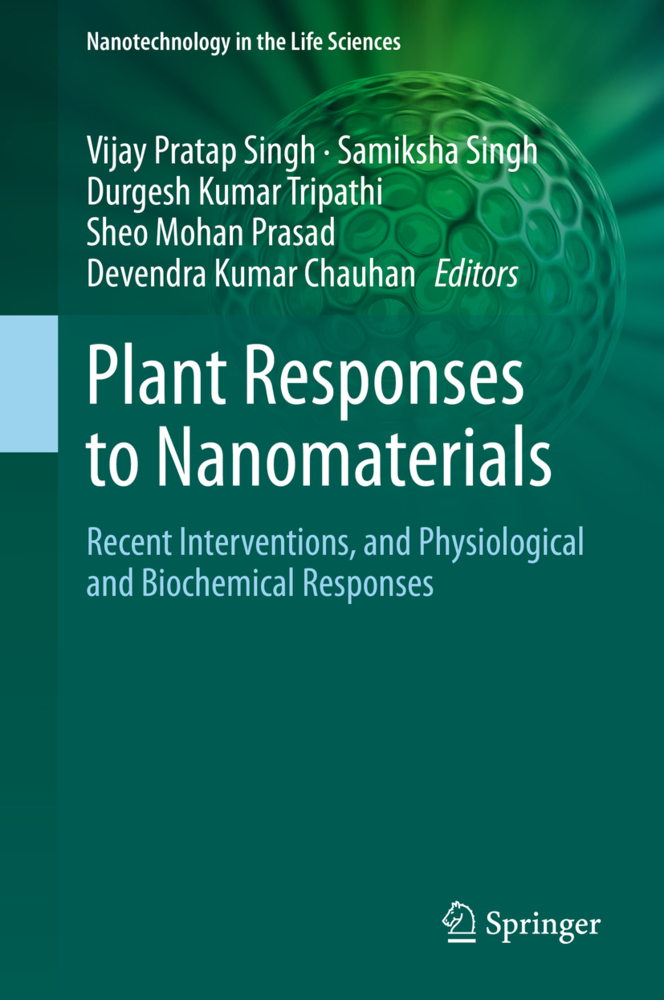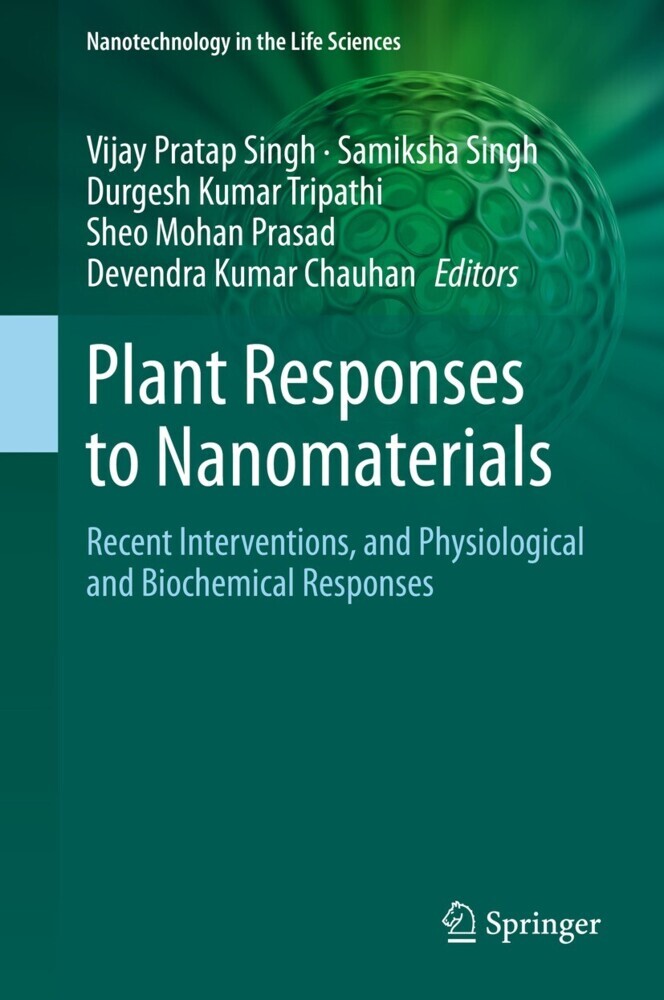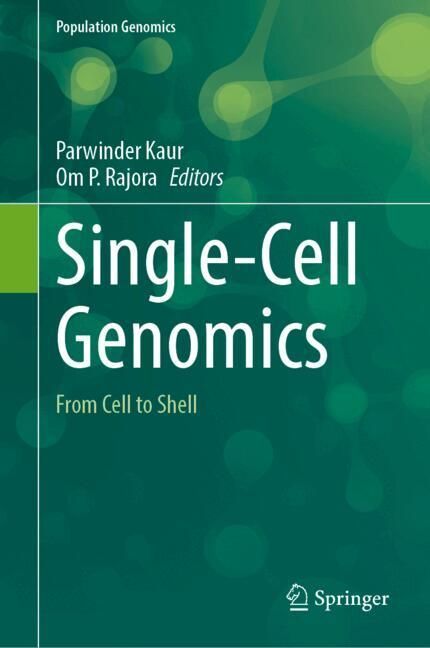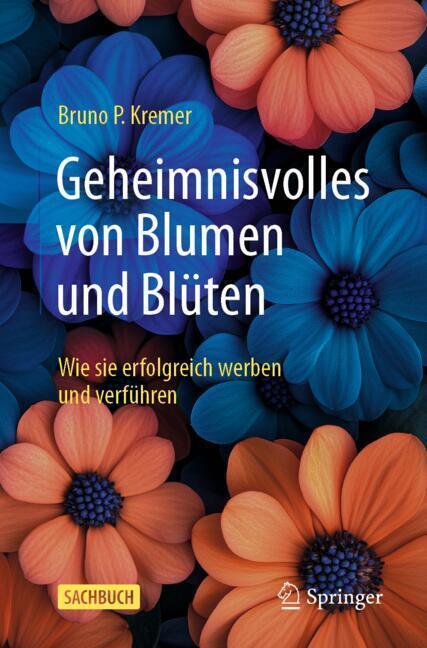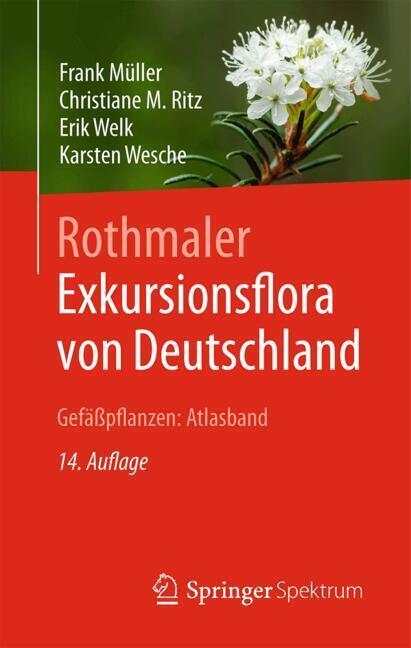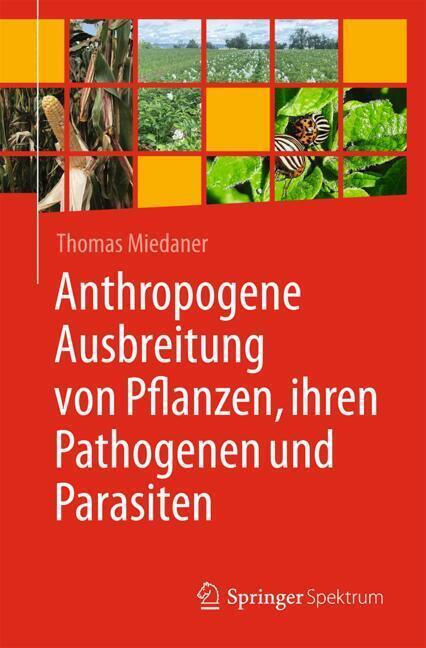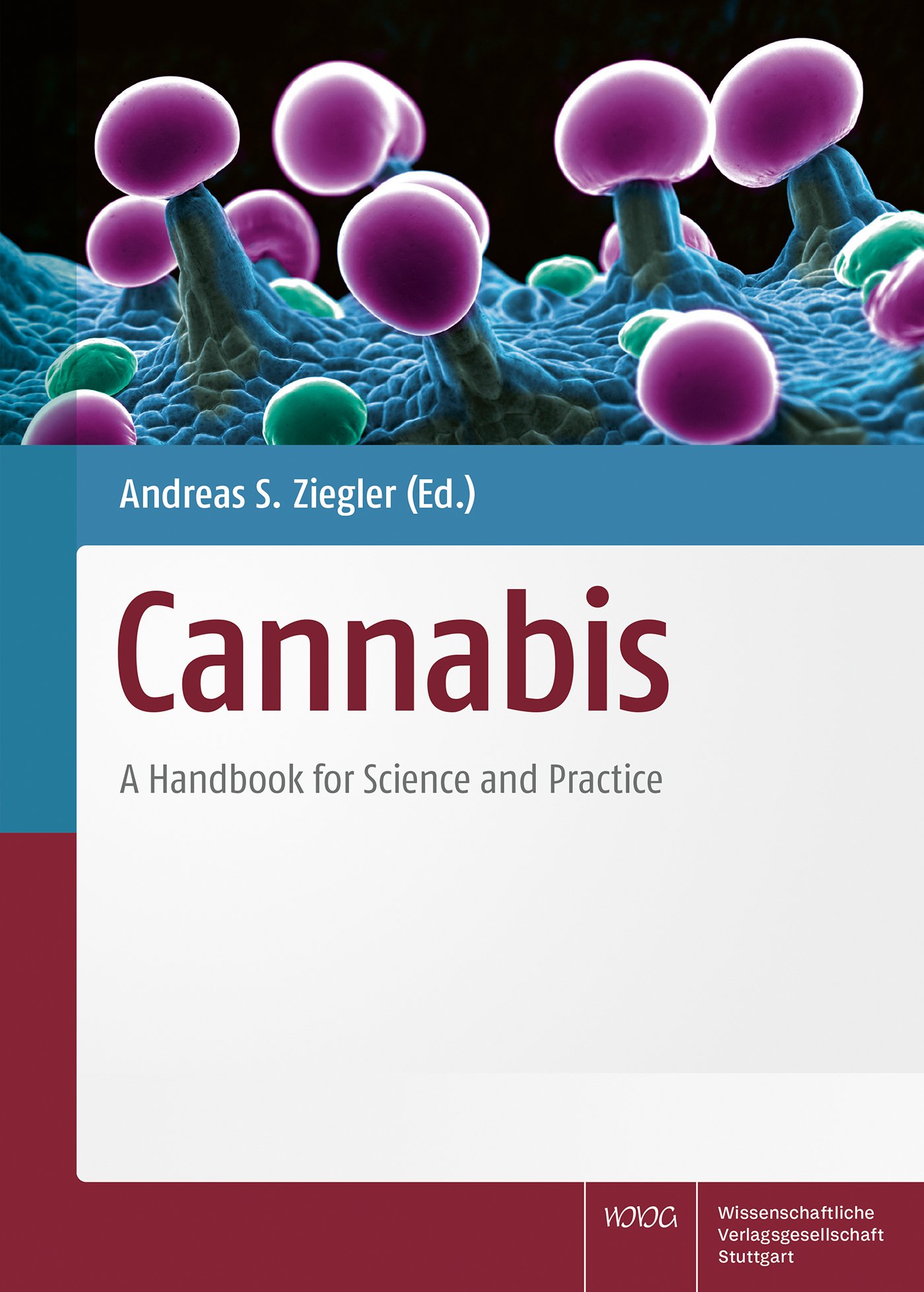The Role of Nanoparticles in Plant Nutrition under Soil Pollution
Nanoscience in Nutrient Use Efficiency
The Role of Nanoparticles in Plant Nutrition under Soil Pollution
Nanoscience in Nutrient Use Efficiency
Nanotechnology has shown great potential in all spheres of life. With the increasing pressure to meet the food demands of rapidly increasing population, thus, novel innovation and research are required in agriculture. The principles of nanotechnology can be implemented to meet the challenges faced by agricultural demands. Major challenges include the loss of nutrients in the soil and nutrient-deficient plants, which result in a lower crop yield and quality. Subsequently, consumption of such crops leads to malnourishment in humans, especially in underprivileged and rural populations.
One convenient approach to tackle nutrient deficiency in plants is via the use of fertilizers; however, this method suffers from lower uptake efficiency in plants. Another approach to combat nutrient deficiency in humans is via the use of supplements and diet modifications; however, these approaches are less affordably viable in economically challenged communities and in rural areas. Therefore, the use of nano-fertilizers to combat this problem holds the greatest potential. Additionally, nanotechnology can be used to meet other challenges in agriculture including enhancing crop yield, protection from insect pests and animals, and by use of nano-pesticides and nano-biosensors to carry out the remediation of polluted soils.
The future use of nanomaterials in soil ecosystems will be influenced by their capability to interact with soil constituents and the route of nanoparticles into the environment includes both natural and anthropogenic sources. The last decade has provided increasing research on the impact and use of nanoparticles in plants, animals, microbes, and soils, and yet these studies often lacked data involving the impact of nanoparticles on biotic and abiotic stress factors. This book provides significant recent research on the use of nano-fertilizers, which can have a major impact on components of an ecosystem. This work should provide a basis to further study these potential key areas in order to achieve sustainable and safe application of nanoparticles in agriculture.
Environmental Emissions of Nanoparticles
Bio- and Geo-Transformation and Bioavailability of Nanoparticles
Interaction of Nanoparticles to Soil Pollutants
Impact of Nanoparticles to Soil Systems
Too Much or Too Little? A Review of the Connundrum of Nanoparticles
Application and Use of Nanoelements in Combating Plant Nutrition
Role of Nanoparticles in Remediation of Contaminated Soils
Biochemical, Molecular and Ultrastructural Aspects in Phytoremediation of Nanoparticles Subjected to Unfertilized Soil
Nanomaterials: A New Approach in Biofortification
Applications and Implications of Nano-Fertilizers in Food Industries
Nanobiosensors Based on Agri-Biomass
Nanoparticles Uptake and Translocation in Plants
Risks and Concerns of Use of Nanoparticles in Agriculture
Mechanism of Nanoparticles Mediated Alleviating Biotic and Abiotic Stresses in Agricultural Crops
Role of Nanoparticles in Environment, Human, and Animals Under Contaminated Soil
Cytotoxic and Genotoxic Aspects of nanoparticles Interactions with Plant Systems
Nanoparticles and its Effects on Growth, Yield, and Crop Quality Cultivated Under Polluted Soil
Impact of nanoparticles of Modulations of Genes and Secondary Metabolites in Plants
Interaction of Nanoparticles with Plant Growth Promoting Rhizobacteria in Polluted Soil
Interaction of Nanomaterials with Plant Metabolism
Bibliography
Index.
One convenient approach to tackle nutrient deficiency in plants is via the use of fertilizers; however, this method suffers from lower uptake efficiency in plants. Another approach to combat nutrient deficiency in humans is via the use of supplements and diet modifications; however, these approaches are less affordably viable in economically challenged communities and in rural areas. Therefore, the use of nano-fertilizers to combat this problem holds the greatest potential. Additionally, nanotechnology can be used to meet other challenges in agriculture including enhancing crop yield, protection from insect pests and animals, and by use of nano-pesticides and nano-biosensors to carry out the remediation of polluted soils.
The future use of nanomaterials in soil ecosystems will be influenced by their capability to interact with soil constituents and the route of nanoparticles into the environment includes both natural and anthropogenic sources. The last decade has provided increasing research on the impact and use of nanoparticles in plants, animals, microbes, and soils, and yet these studies often lacked data involving the impact of nanoparticles on biotic and abiotic stress factors. This book provides significant recent research on the use of nano-fertilizers, which can have a major impact on components of an ecosystem. This work should provide a basis to further study these potential key areas in order to achieve sustainable and safe application of nanoparticles in agriculture.
Preface
Global Importance and Cycling of NanoparticlesEnvironmental Emissions of Nanoparticles
Bio- and Geo-Transformation and Bioavailability of Nanoparticles
Interaction of Nanoparticles to Soil Pollutants
Impact of Nanoparticles to Soil Systems
Too Much or Too Little? A Review of the Connundrum of Nanoparticles
Application and Use of Nanoelements in Combating Plant Nutrition
Role of Nanoparticles in Remediation of Contaminated Soils
Biochemical, Molecular and Ultrastructural Aspects in Phytoremediation of Nanoparticles Subjected to Unfertilized Soil
Nanomaterials: A New Approach in Biofortification
Applications and Implications of Nano-Fertilizers in Food Industries
Nanobiosensors Based on Agri-Biomass
Nanoparticles Uptake and Translocation in Plants
Risks and Concerns of Use of Nanoparticles in Agriculture
Mechanism of Nanoparticles Mediated Alleviating Biotic and Abiotic Stresses in Agricultural Crops
Role of Nanoparticles in Environment, Human, and Animals Under Contaminated Soil
Cytotoxic and Genotoxic Aspects of nanoparticles Interactions with Plant Systems
Nanoparticles and its Effects on Growth, Yield, and Crop Quality Cultivated Under Polluted Soil
Impact of nanoparticles of Modulations of Genes and Secondary Metabolites in Plants
Interaction of Nanoparticles with Plant Growth Promoting Rhizobacteria in Polluted Soil
Interaction of Nanomaterials with Plant Metabolism
Bibliography
Index.
Rajput, Vishnu D.
Verma, Krishan K.
Sharma, Neetu
Minkina, Tatiana
| ISBN | 978-3-030-97391-9 |
|---|---|
| Artikelnummer | 9783030973919 |
| Medientyp | Buch |
| Copyrightjahr | 2023 |
| Verlag | Springer, Berlin |
| Umfang | XI, 394 Seiten |
| Abbildungen | XI, 394 p. 37 illus., 33 illus. in color. |
| Sprache | Englisch |

